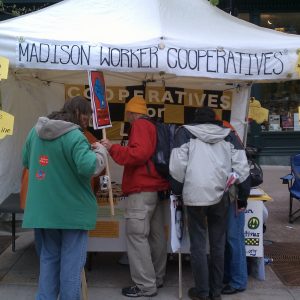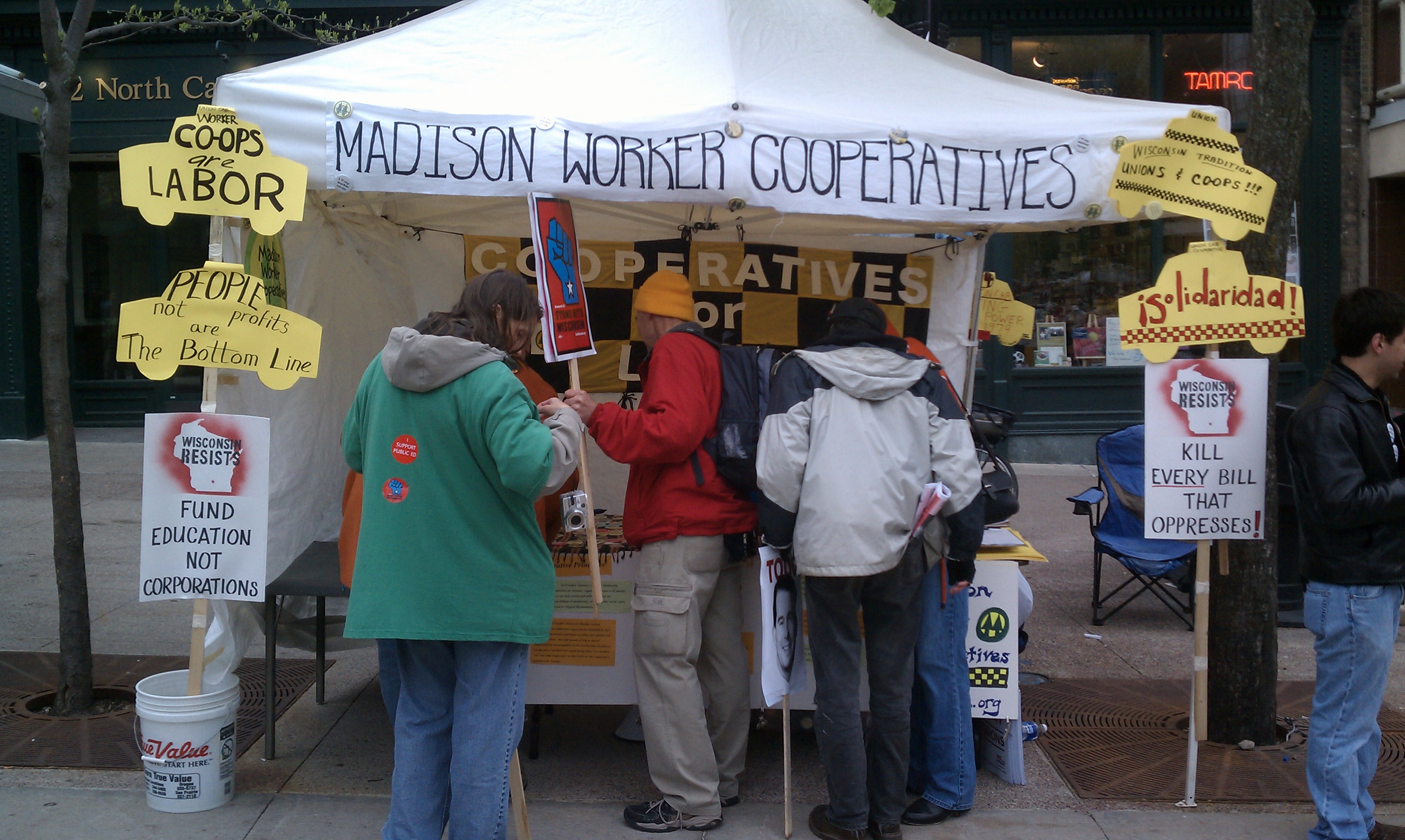The Crisis
Today, it seems that the wasteland of the free market has reached a fevered pitch of self-parody. Insulin prices jump to the thousands and homeless people are found frozen solid in the streets while billionaires complain about not being called ‘people of means’. America ranks fourth-highest in world wealth inequality while politicians continue to boast of fictitious low-unemployment, a statistic powered only by the massive increase in precarious work, and one which further obscures the massive stagnation of wages. Forty percent of American workers sit just one paycheck away from poverty, and the same number cannot even produce 400 dollars for an emergency–yet the workers of our country must pay off massive, looming debts in order to avoid another devastating economic crash.
I would like to stress that these are not just numbers, concepts that exist in the abstract. These statistics power harrowing experiences–choices that mean the difference between wellbeing and suffering, life and death. For every dry, detached description of trillion-dollar debt, there is a young person who must shoulder the fear of looming homelessness. For every percentage point the price of medicine jumps, there is a mother who must choose between feeding her children or sustaining her health. These are not archetypes or exaggerations. To quote Professor David Harvey, the realm of freedom begins where the realm of necessity ends–and in places where the basics of survival are left to the forces of the market, poverty is unfreedom, misery. And part of such misery stems from the understanding of workers that the economic status quo does not have to stand in its current incarnation, that its perpetuation while billionaires cavort on superyachts is a cruel joke, an irony of the highest order.
This is not just an economic crisis. It is a crisis humanity–of empathy. We are long past the point of a call to action. Now we must decide which path to take. So what is to be done?
Clearly, the answer is more sticky and intangible than can be articulated in one article, or solved through one measure. Yet, one aspect of a larger solution continues to be left out by mainstream American discussion–the widespread introduction of workplace democracy in the USA.
In order to understand this potential solution, a definition is necessary. Luckily, the concept is simple, however foreign it is to us. The United States Federation of Worker Cooperatives defines a worker cooperative as a workplace where employees “participate in the profits, oversight, and often management of the enterprise using democratic practices“. It’s just a workplace where employees create their own consensus (illustrated here), and share in the profits. If you share in making the product, then you also share in deciding on the process of making it, the structure of the workplace, and the pay you receive, rather than a corporate board making these decisions for you. That’s it.
I will expand on the benefits of such a company later, but suffice to say the benefits of such a structure are incredible. Yet only eleven percent of Americans are able to identify what a worker cooperative actually is, and only 7,000 work in one. In a post-Friedman society where we assume free market capitalism to be the apex of economic order, the proposal that the corporation is not the most efficient form of production lies outside of the public imagination. And while political democracy remains one of our core values, the very tenets of that democracy are consistently threatened by an inequitable form of pluralism that privileges the demands of the wealthy over the consensus of those who do not have access to the same avenues of influence. Even more glaringly, bosses and faceless corporate boards continue to wield unprecedented control over the rhythms of our lives and our access to basic needs. Our political democracy, economic health, and personal dignity is threatened by this despotic organizational structure.
But, intuitively, Americans know that we need a shift–which is why even though we remain ignorant about what cooperatives are, eighty percent of us are more likely to want to purchase from one if given a definition. We want, and need, a change in the status quo. We need a solution to this crisis, and we need democracy in every space of life. This is why I propose that what we must do–for our personal and collective wellbeing–is shift the balance of power to the workers, and workplace democracy is an incredibly effective method of doing so.
On Company Time
Workplace democracy is concept most of us cannot even dream of when our boss tells us when to go to the bathroom, when we can leave our office, when we can get married, pregnant, or sick, and whether or not we will have enough pay to access the basics of survival. It is interesting that renowned economist Milton Friedman argued a free-market status quo would advance individual freedom, when a boss having control over whether or not you can feed your children seems to fly in the face of any sense of personal freedom. Especially peculiar was his argument that, if one had a despotic boss, the remedy was simply to find another job–that the processes of competition would sort out the process until a balance of power was reached.
Of course, this analysis completely strays from material reality and avoids using any real evidence beyond a lofty, surface-level claim about ‘freedom’. In a world of noncompete clauses that prevent us from finding another employer in our industry for years, ‘right to work’ laws that prevent the inequality-decreasing practice of unionizing, 49 of 50 states where we can be fired for any reason, 45 states without paid parental leave, the average American worker doesn’t have much freedom at all. Further, the decisions about whether we can unionize, be fired, take care of our children, and, yes, pee on company time, is made by a board of directors who will never meet or care about us, the average size of which is 9.2 people, taking the undemocratic nature of an office and almost comically widening its scope. And, of course, the most vital decision these 9 people and the CEOs they work with make it your pay–and theirs, which is perhaps why the average ratio of CEO to worker pay in America is 361 to 1.
In the hierarchical nature of the corporation, then, we see the roots of our contemporary economic crisis. Even though those at the top have the power to decide whether or not their workers can access basic needs, they are so far alienated from these workers that they cannot see them in terms of their humanity, only as numbers, symbols. Here lies the crux of the crisis of poverty: wealth is being produced, but it is not distributed equitably among producers, because not all producers are making decisions. Hence, we have Disney workers sleeping in their cars and Wal-Mart holding food drives for their own employees.
Of course, one may be tempted to point out that this is the way that industry has always been organized, and has indeed led to many significant technical and social innovations–so what’s the problem? Hierarchical organization, though unfortunate for lower-tier workers, is efficient.Though workplaces are unfree and the workers at the bottom are paid paltry compared to those at the top, hierarchical corporations are the best it gets, for workers and for efficiency…aren’t they?

On Our Time: The Cooperative Example
Contrary to be popular belief, one does not have to be a zealous Leninist in order to question the status quo of corporate hierarchy and American wealth inequality. In fact, one of the many strengths of the worker cooperative solution is one that can work both sides of the debate in a particularly effective way–it’s good for the workers, and it’s good for the level and quality of production.
To reiterate the definition, Dr. Richard Wolff states it in plain terms: “when workers in an enterprise collectively function as their own board of directors”. We can illustrate this in contrast to traditional corporations, with 9-person boards and elite classes of managers. In contrast, in worker cooperatives, it’s traditionally one person, one vote–the decisions come from within, not above. When decisions are made about who is laid off and who is to receive reduced working time, they are made with the human cost taken into account–the human cost is not just one’s peers, but oneself.
The available evidence, accordingly, points to incredible implications. To illustrate the profound effects of such a model, it is useful to reiterate the average pay ratio in an American corporation–361:1. For the worker cooperative, the story is quite different–the largest, the Catalonia-based Mondragon Cooperative, retains a pay ratio of between 3:1 and 5:1, with minimum pay being higher than the local equivalent, despite having over 85,000 members worldwide. (For Apple, this would mean each worker receiving 403,000.) Closer to home, in the largest American worker co-op, Cooperative Home Care Associates, this ratio was highest at 11:1, in an industry known specifically for its inequity. For this same cooperative, the other economic benefits are almost stunning, as detailed in a profile by Yes! Magazine. Workers boast $16 an hour wages (with benefits) in a state where the average for their job is $10.45, guaranteed work hours, family health insurance, and a rate of employee turnover four times lower than their industry average. This corroborates the overall picture for these companies, as a study by the National Center for Employee Ownership emphasized some profound effects for worker compensation and security: retirement accounts that are 2.5 times greater, layoff rates during the recession that were four times lower, and wages up to 12% higher than industry averages. And when one’s company has higher security and wages, there are clear personal implications. Worker cooperatives have been shown to increase quality of life, workplace satisfaction, and even life expectancy.
Outside of these direct benefits for the workers, in an incredible finding, the productivity and longevity of the company benefits as well. the three major studies of cooperatives have demonstrated the positive correlation between profit sharing/board representation and increased productivity. This is correlated by the study conducted by the NCEO, which also found that cooperatives were more likely to stay in business. This tendency to outperform conventional corporations in terms of longevity is corroborated by Professor Erik Olsen, who found that in terms of survival rates, worker cooperatives outperformed traditional firms at the median timespan and had similar survival rates in the long run. This is intuitive, as vertical organization, described by organizational theorist Kenneth Boulding, encourages submission, rather than an entrepreneurial spirit and incentives to actually produce quality goods. It seems that the cooperative model nurtures, rather than crushes, the innovative spirit.
While worker cooperatives are a relatively simple change in organizational structure from traditional corporations, the large-scale and long-term implications of a massive shift are both clear and vital. These jobs are locally-focused, high-quality, secure places of employment that not only provide security and financial independence to their employees and do so to a much larger mass of people than a top-down corporation ever could. As Dr. Richard Wolff points out, despite the relatively simple shift required, it is a massive reorganization of production as we have been trained to understand it–however, this seems to be exactly what we need.
Dr. Wolff states also that worker cooperatives “emerge as the only serious mechanism to structurally do something lasting about capitalist inequalities”–in a way, one of our greatest hopes, for reasons I hope I have made obvious. If change to the economic status quo is possible, and clearly it is, then it becomes a matter of the economic consensus that we want. We can choose to have businesses that fail at higher rates, emiserate our workers, alienate us from ourselves and each other, and lessen our personal freedom. Or, we can choose the way out–forward, together.






Be First to Comment